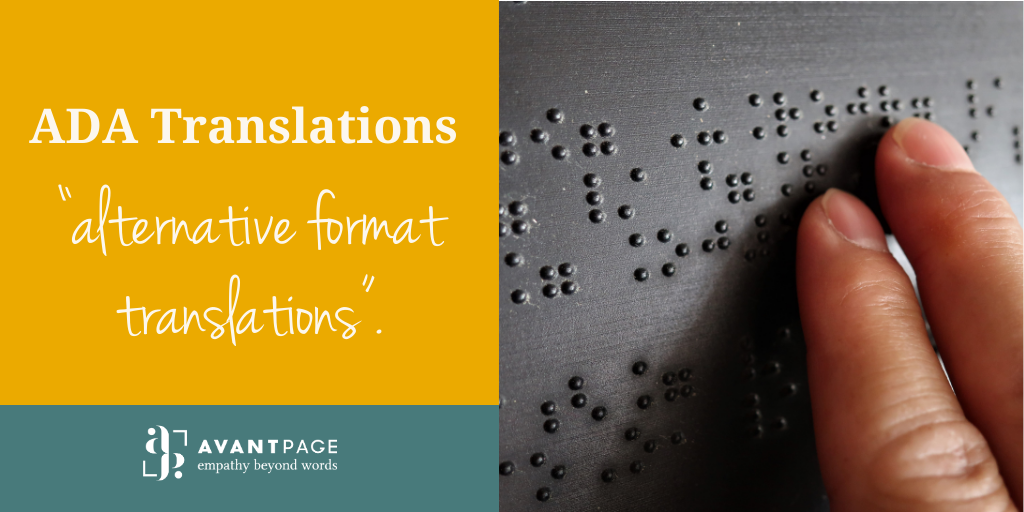Translation provides meaningful access to services and products that people need. Sometimes, though, this may not be enough for people with certain disabilities. Fortunately, many governments and private organizations are taking notice of this and creating ADA-compliant translated files.
ADA translation is based on the requirements of the Americans with Disabilities Act (ADA), which was implemented in 1990. ADA-compliant translation is used specifically to ensure that those who have communication disabilities are able to engage with the information they are given in a meaningful way. A communication disability is any disability “that affects an individual’s ability to comprehend, detect, or apply language and speech to engage in discourse effectively with others.” This includes vision, hearing, or speech disabilities.
ADA-compliant translations are often referred to as “alternative format translations”. Alternative formats include, but are not limited to, braille, real-time captioning, large print formatting, accessible PDFs, and audio formatting. Each of these helps preserve the original meaning of the files while making it accessible to a broader audience.
Braille translation takes the text from the source and translates it appropriately in braille, giving those with vision loss or blindness the ability to access the information in the document. Large-print formatting is specifically designed to reduce eye strain by making the text and/or graphs from the translated document larger which helps those with vision loss. Accessible PDFs are often used with read-out-loud features, so all illustrations, charts, and graphs contained in the content should have a description in the target language embedded.
ADA-compliant translation is necessary for all domains. All professionals in the fields of education, elections, healthcare, government, and other regulated fields will definitely see an increase in ADA accessible documents requests. All of us in the translation industry must be aware that these emerging formats exist, not only so we can provide our services but to feel proud that we are part of the process to make people’s communication better.

Posted by
